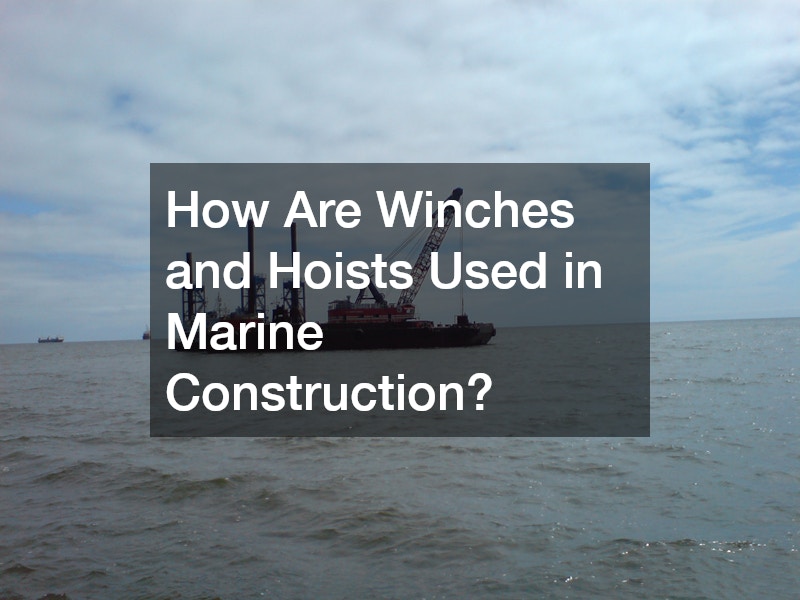
Winches and hoists are indispensable tools in marine construction, serving critical roles in the building and maintenance of structures such as docks, bridges, and offshore platforms. These devices facilitate the lifting, pulling, and positioning of heavy materials, essential for operations in challenging aquatic environments.
In marine construction, winches are primarily used for their pulling capabilities. They are instrumental in mooring, anchoring, and towing marine vessels, as well as positioning floating construction platforms.
Winches generate the necessary force to manage the movement of large objects through their robust drum-and-cable mechanisms, enabling precise control over heavy loads. This precision is crucial in aquatic settings where currents and waves can affect stability and alignment during construction tasks.
Hoists, on the other hand, are utilized for their vertical lifting power. They play a pivotal role in lifting construction materials from ships to platforms or from the water’s surface to elevated structures. Electric and hydraulic hoists are common in marine construction due to their reliability and strength, capable of handling loads ranging from heavy steel beams to concrete blocks. This lifting capacity is vital for constructing the foundational supports of piers and bridges, where materials need to be raised above the waterline.
The integration of winches and hoists in marine construction not only enhances operational efficiency but also ensures safety. The ability to control heavy lifts and pulls with precision minimizes the risk of accidents in the inherently hazardous marine environment. Through these tools, marine construction projects achieve the structural integrity and resilience required to withstand the demanding conditions at sea.
Watch the video above to learn more about how winches and hoists are used in marine construction!.


Leave a Reply
You must be logged in to post a comment.